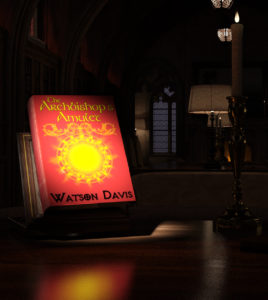NaNoWriMo: The Basics
For anyone who doesn’t know—and unless you’re involved in writing, why would you?—NaNoWriMo is National Novel Writing Month aka November aka What The Heck Was I Thinking. NaNoWriMo, frequently shortened to Nano, has a long history, beginning back in 1999. The goal is to write a novel in a month, but you don’t actually have to write a novel; you just have to write 50,000 words of a novel. The founders of the contest decided on that nice round number of 50,000 words, which is on the low end for novels in most genres, so you don’t actually have to finish the novel.
Although it’s billed as a contest and you can get some “prizes” for winning, the biggest prize for “winning” Nano is that you have a good start on a rough draft of a novel. The second biggest prize is what you learn by going through the process. One year, my winner’s certificate got me half-off Scrivener.
At the time of this writing, I’ve been through Nano twice, and I’ve registered for a third time. The first time through, I wrote 75,000 words of a novel that was later scrapped and re-written, and is a story idea I want to revise into something at some point. The second time through, I wrote 55,000 words of a novel that went on to be revised into “The Archbishop’s Amulet”… a book you really need to buy. And write a glowing review for.
By going through Nano, I learned something about three things that I sometimes still have issues with: the Perfect Time, the Perfect Place, and the Perfect Word.
The Perfect Time
I always felt like the Perfect Time for me to write was in 30-45 minute chunks late at night. Writing during the day seemed wrong, because that was the time I worked on “work.” And if I had a free 5 or 10 minutes, that didn’t seem like enough time to really get going; that short of a window seemed like it would not be enough time to immerse myself in the story and build up a head of steam. I’d just get going and then have to stop.
Nano proved to me I was wrong. If you’ve got a 5 minute break while you’re waiting for someone to get ready, take that opportunity to write. If you’ve got a doctor’s appointment, take a notebook and write longhand, or if you’ve got Scrivener on your phone or your iPad, take that with you and write.
If you have a minute where you can get away and write 10 words, that’s 10 words you’d have to write later anyway, so get it done.
Don’t wait for the right time. Any time is the right time to write.
The Perfect Place
As I said, I prefer to write at night in my office at my desk with all the lights turned out and the windows open and gentle breezes blowing through. When I lived in Texas, I generally let the open window thing go because the weather refused to cooperate except on rare occasions. I don’t like to have distractions and noises around me while I’m writing; I prefer peace and quiet.
Well, OK. Quiet might be negotiable depending on the scene I’m writing. I like to have music playing while I’m writing and the type of music varies depending on my mood and the emotional content of the scene.
But Nano taught me I don’t need that. I don’t need to write at night. I don’t need to be at my desk in my office with the lights out. I can write just fine the TV blasting and people talking around me. I can write in hotel rooms at a cheap desk. I can write in doctor’s offices and on trains.
A common thing-that I’ve never actually done-is for people in Nano to meet up at a local coffeeshop or a local donut house or some other meeting place and everyone write together. The closest I’ve come to that is writing in sprints with groups on SavvyAuthors.
When you need to get your words in for the day, you can learn to write in places you once thought impossible, or at least sub-optimal.
The Perfect Word
But here’s the real crux. When you’re writing your first draft, it shouldn’t be perfect. If you take too long searching your mind and your thesaurus for the perfect word, then you’re wasting time.
When you’re writing, you want to write fast. If the perfect word doesn’t pop into your head, write yourself a note in the text to describe the word you’re looking for. I generally put notes to myself like that in the text surrounded by square brackets, i.e. []. When I start revising, I can then take the time and search for the word and clarify my meaning.
There are also a lot of other laws and rules that you may get into your head like no passive voice and don’t use adverbs. When you’re writing your first draft, go ahead and use passive voice, go ahead and use adverbs. During revision, you can take the passive voice sentences and re-arrange them into active voice, and you can find all those adverbs and expand them or cut them. When you’re writing your first draft, don’t worry about it. Just write.
A technique that I learned either from The Weekend Novelist or No Plot, No Problem or maybe James Scott Bell is to write “down the page.” When you do this, you imagine yourself in the mind frame of the POV character, and then you just write phrase after phrase of description of the surroundings, of what the POV character senses and feels, blocking in rough bits of the dialogue. Once you have that, then you can come back in and convert all of this into sentences.
I’ve heard that some people write chunks of their first drafts that way and leave it without converting things into sentences and then do the sentence conversion as part of the revision. I don’t do that. If I’m having problems getting going on a scene, I will use the down the page technique to get the bones of the scene in place, and then I’ll come back through and fill it out.
So don’t worry about the words being perfect. Just get some words on the page.
And that’s it.
Those are three of the biggest lessons I’ve learned in winning NaNoWriMo in the past. Don’t worry about whether it’s the perfect time to write, don’t worry about whether it’s the perfect place to write, and don’t worry about getting the word’s perfect.
Just write.
HTH.
And if you decide to challenge yourself with Nano, go to https://nanowrimo.org and look me up. I am The_Pencil_Neck.



